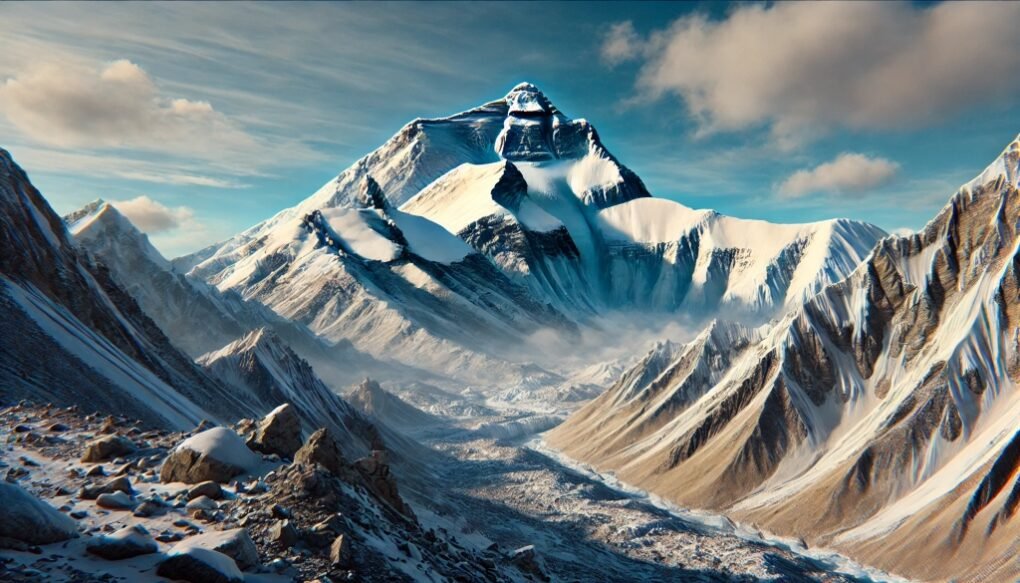Mount Everest, standing at a staggering 8,848 meters (29,029 feet), is a symbol of human perseverance and ambition. While countless adventurers dream of reaching its summit, the mountain also holds a dark secret — Rainbow Valley, a section near the top known for its eerie collection of bodies left behind by climbers who perished on their journey. The valley’s name may sound enchanting, but its grim reality reveals the ultimate price of attempting one of the most dangerous climbs in the world.
In this article, we will delve into the haunting history of Rainbow Valley on Mt. Everest, examine the factors that make it such a perilous section of the climb, and explore the ethical dilemmas faced by climbers and expedition teams.
The Origin of Rainbow Valley’s Name
Rainbow Valley is not a place marked by vibrant flora or colorful landscapes. Its name originates from the brightly colored jackets, boots, and climbing gear worn by those who tragically lost their lives on Everest’s slopes. Located near the summit, just below the area known as the “Death Zone” (above 8,000 meters), Rainbow Valley serves as a chilling reminder of the risks involved in high-altitude climbing.
Many climbers, once they succumb to the brutal conditions, are left in place due to the difficulty of retrieving bodies from such heights. Over time, the valley has become scattered with these colorful markers — not a natural phenomenon, but a grim testament to the many lives claimed by the mountain. The sight is both haunting and mesmerizing, embodying the bittersweet allure of Mt. Everest itself.
The Deadly Perils of the Death Zone
The area surrounding Rainbow Valley is part of Everest’s infamous Death Zone, a term used to describe altitudes above 8,000 meters where oxygen levels are dangerously low, and survival becomes increasingly difficult. Climbers who venture into this zone face an overwhelming array of physical challenges, including:
- Hypoxia (lack of oxygen): The body struggles to function with less than one-third of the oxygen available at sea level. Even with supplemental oxygen, hypoxia can impair judgment, slow reflexes, and lead to unconsciousness.
- Frostbite and Hypothermia: Temperatures in the Death Zone can plummet to below -40°C (-40°F). Prolonged exposure to such cold leads to frostbite, with climbers often losing fingers, toes, or even entire limbs. Hypothermia can quickly set in, further impairing decision-making and coordination.
- Altitude Sickness: As climbers ascend, they are susceptible to conditions like High-Altitude Pulmonary Edema (HAPE) and High-Altitude Cerebral Edema (HACE), which can cause fluid build-up in the lungs or brain, leading to death if untreated.
- Exhaustion: The physical exertion required to climb in these conditions, combined with low oxygen levels and the weight of gear, causes extreme fatigue. Even a minor slip or misstep can be fatal.
Because of these extreme conditions, many climbers succumb to the environment, unable to descend or receive help in time.
Ethical Dilemmas of Leaving Bodies Behind
One of the most haunting aspects of Rainbow Valley is that most of the bodies remain where they fell. The harsh conditions of Everest preserve them in almost perfect condition, making them visible to those who attempt the climb. Retrieving a body from such heights is dangerous, requiring immense physical effort and significant financial resources.
As a result, climbers are often faced with difficult decisions: Should they risk their own lives to save a fallen companion? Should they continue to push for the summit, even as others are dying around them? These are questions that have no easy answers.
In many cases, rescue operations in the Death Zone are nearly impossible. The extreme altitude, lack of oxygen, and sheer exhaustion experienced by climbers and Sherpas make it unfeasible to carry down the bodies. Even if a team wanted to retrieve a body, the effort could jeopardize their own survival. For many, the mountain becomes their final resting place — and Rainbow Valley serves as their collective grave.
Why is Rainbow Valley So Dangerous?
While Rainbow Valley lies just below the summit of Everest, the danger it presents is immense. The climb to this point involves navigating steep ice cliffs, unstable glaciers, and deep crevasses. But the greatest threat comes from the human body’s inability to survive in the thin atmosphere.
To understand why so many climbers perish in this area, it’s crucial to examine the physiological and environmental challenges:
- Oxygen Deprivation: As climbers ascend into the Death Zone, their bodies are starved of oxygen. Supplemental oxygen tanks are used, but they provide only a temporary solution. As the body continues to weaken, the brain becomes sluggish, and decision-making becomes impaired.
- Extreme Fatigue: Climbing at such altitudes is physically exhausting. Every step requires monumental effort, and even the simplest tasks, like fastening a carabiner or tightening a rope, become Herculean challenges. Exhaustion sets in quickly, and it is in these moments of weakness that climbers can make fatal mistakes.
- Unpredictable Weather: Everest’s weather is notoriously unpredictable. A sudden storm can blow in without warning, reducing visibility to almost zero and dropping temperatures to deadly levels. In such conditions, climbers can easily lose their way, fall into crevasses, or suffer from frostbite and hypothermia.
- Time Constraints: Climbers are acutely aware that they have only a limited window to reach the summit and descend before nightfall or worsening weather. The pressure to reach the top before turning back can push climbers to ignore signs of altitude sickness or extreme fatigue, leading to catastrophic consequences.
Efforts to Retrieve Bodies from Rainbow Valley
In recent years, efforts have been made to remove some of the bodies from Everest, particularly those in Rainbow Valley. Families of deceased climbers sometimes fund expeditions to retrieve their loved ones, and occasionally, climbers who die in more accessible areas are brought down by Sherpas or rescue teams.
However, for the most part, the bodies remain. The risk to rescuers is simply too great, and the cost of such operations is prohibitively high. It is estimated that retrieving a body from the Death Zone can cost between $40,000 and $80,000 — a price that many families cannot afford, and few rescue teams are willing to take on.
A Tragic Reminder of Everest’s Dangers
Rainbow Valley serves as a stark reminder of the dangers inherent in climbing Mt. Everest. For many climbers, the allure of standing on the world’s highest peak outweighs the risks. But as the valley filled with colorful jackets and gear shows, the mountain does not forgive mistakes.
Those who venture into Rainbow Valley do so with the knowledge that they are treading on ground that has claimed the lives of many before them. It is a place of both beauty and tragedy, where dreams of reaching the summit are often eclipsed by the harsh reality of nature’s power.
Rainbow Valley’s Place in Everest’s History
The legacy of Rainbow Valley is one of both inspiration and caution. Mt. Everest represents the pinnacle of human achievement. Rainbow Valley symbolizes the costs of conquering nature’s toughest challenges. Climbers pursue the dream of summiting Everest. They do so knowing the mountain’s dangers are ever-present.
For those who seek to climb Everest, Rainbow Valley stands as both a warning and a memorial. It is a place where life and death intersect, where triumph and tragedy coexist, and where the ultimate price of adventure is paid by those who fall short of their goal.










